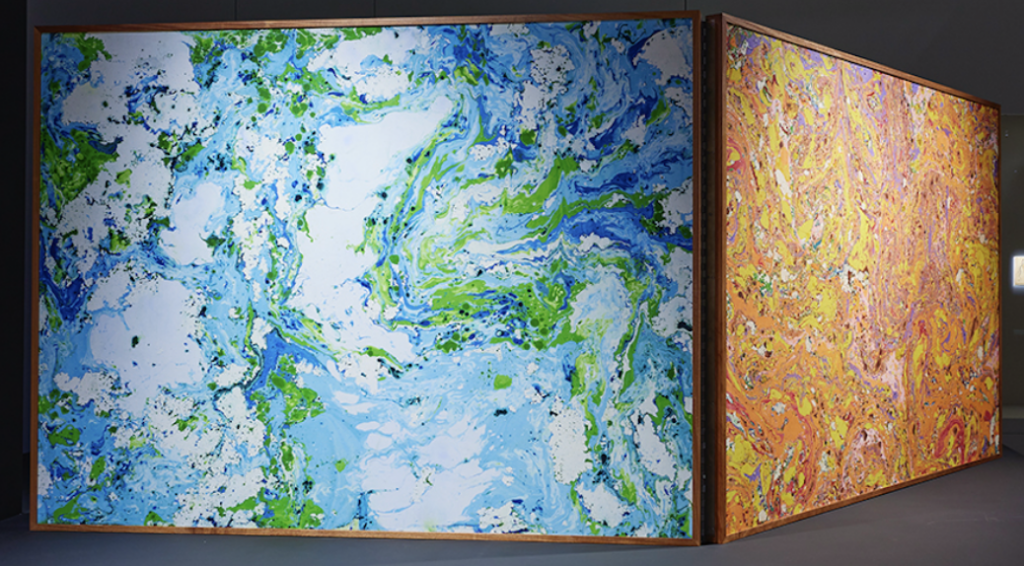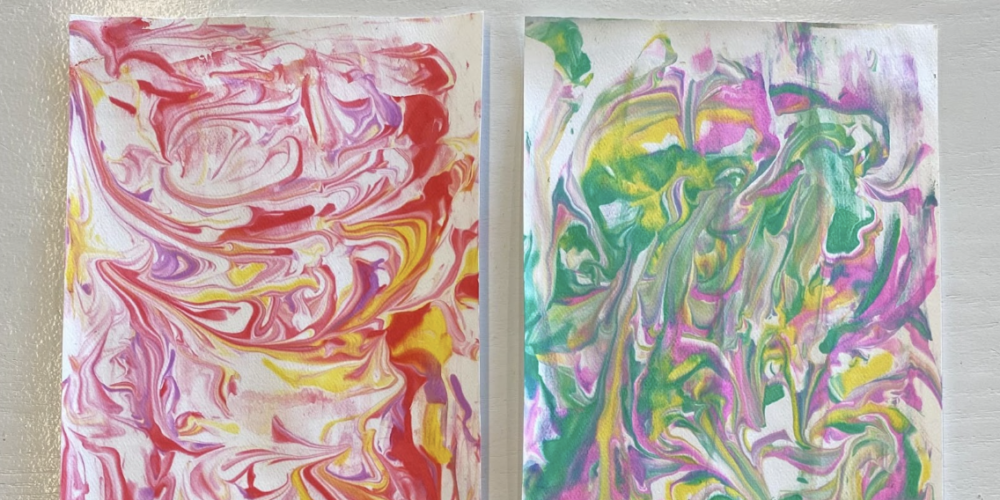By CJ Mitchell, Community Access Manager
A terminal escape from the place that binds us by Gala Porras-Kim asks the question: What should happen to human remains that are held by major institutions of learning, including museums? When do these culturally significant and sacred items become artifacts or objects? And who gets to decide what happens to these objects that have been taken–or more bluntly stated, stolen–from their place or country of origin. Porras-Kim proposes this: Ask these sacred items what they would like to happen, thus relinquishing the control from the institution back to the ancestors and the place from which they came. In 2019, Porras-Kim traveled to Gwangju in South Korea and visited the Gwangju National Museum to look at the human bones from Shingchang-Dong, Gwangju (1 BC). She looked at where they were currently housed and from where the bones were removed. Necromancy is the belief in the survival of the soul after death, and the ability to communicate between the dead and the living. She specifically uses encromancy, a form of necromancy that uses ink stains to converse with ancestors to understand their wishes for where they would like to rest. The ink is used in paper marbling, a form of monotype printing in which each artwork can only be made once. In this process, ink is suspended in water and then the paper is laid on top. Once the paper is removed from the water the ink is transferred to the paper. Porras-Kim used marble printing techniques to create large marbling on paper, developing a metaphorical geographic map of where the bones should rest. Paper marbling could be described as a method in which the artist has limited control in the process, only control of the colors and a slight role over the formation of the ink on the water. But once the paper touches the water, what will be, will be. With this activity, we will use slightly different materials: liquid watercolor in place of ink and shaving cream in place of water. In this art making activity, ask yourself: how does it feel to not know the exact or precise outcome of your effort?
Ages: Grades K–12+ (5 years–Adult)
Time It Takes: 20–30 minutes, plus 15 minutes for drying
What We Are Going To Do:
- Monotype print
- Marble Paper Printing on Paper
You’ll Need:
- Liquid watercolor or food coloring
- Heavyweight paper, such as watercolor paper or cardstock, that is smaller than the trays
- Shaving cream
- Two trays, one for making the marble print and one for removing the foam
- A bowl or container, to hold used painted shaving cream
- Scraper to remove foam from paper, such as a sturdy piece of cardboard
- A stick or the end of a brush to manipulate the paint in the shaving cream
Before We Start:
Let’s look at the images and videos of Gala Porras-Kim, A terminal escape from the place that binds us, 2020.
The work is two large scale marble printed paper, oriented in landscape directions and meeting in a “flying v” that extends towards the viewer. The artist noted that this display at the museum resembles the backdrop on a stage.Both works on paper are thinly framed with light mahogany wood, and are suspended in space with the bottom of the frame sitting on the floor of the white podium. The print on the right has a warm color palette and the print of the left has a cool color palette.

Think About
- What words come to mind when you look at the videos or images?
- What do you notice about the marble paper prints?
- Do these marble paper prints remind you of other things?
- What do you notice about the two large marble prints? How are they similar? How are they different?
Art Activity
- Create a thick layer of shaving cream that covers the bottom of the tray to fit your paper. You can use a tool like a paint spatula to spread it out evenly.
- Add your watercolor. Apply drops of watercolor to the shaving cream, starting with one color. Then add up to 3 to 4 colors.
- Move the paint around on the shaving cream. Use a stick or the end of a paintbrush or clean plastic comb to move the paint around, creating a marble effect.
- Once done swirling around the paint in the cream, then press the paper on top of the painted shaving cream.
- Carefully remove the paper from the cream. Place the marble paper in the clean second tray and scrape away the excess foam. If the tray is deep and large enough, use the sides of the tray to remove excess cream from the scraper. Suggestion: have a very large container that excess shaving cream can be scraped into.
- Let it dry.
- Now repeat. You do not have to dispose of the cream after each print. Sometimes more watercolor can be added to get a second or third print. The steps can be repeated again with different colors and different techniques with moving the paint around in the shaving cream.
- Dispose of the cream that has paint in it by throwing it in the trash.
